Our annual trip to hike and view Sierra Nevada wildflower was impacted by the approximately 40 feet of snow that fell over the winter. Many trails were not easily passable early in our trip and wildflowers were late because of all the snow still on the ground. Some trails were still under snow when we left and may stay that way until next year. The good news was that water was plentiful for both refilling Lake Tahoe and creating a super bloom once the flowers could pop out.
When we arrived, there was lots of un-melted snow on the upper elevation trails (8,000ft+). At the end of 30 days almost all this snow had melted out and we were able to hike this trail. There was still deep snow on northern slopes and above 9000 ft.
We began hiking at lower elevations (6,000-7,000 feet) and the wildflowers were plentiful. On the Sagehen Creek trail north of Truckee, Karin was standing in a patch of Mountain Mule Ears (Wyethia mollis), a sunflower. These are all over the Sierra Nevada. The name “Mule Ears” comes from the shape of the leaves. Some Native Americans used the roots as a medicine for sores, burns, and rheumatism. Actually the flower immediately in front of Karin is an Arrow-leaved Balsam-root which has a similar flower and is also a sunflower.
The delayed flowering season allowed us to see the blooming of Mahala Mat (Ceanothus prostratus). This plant looks like a ground cover but is actually a low growing bush. Native Americans used the flowers as a soap. We only found it blooming in small shaded areas and understand that a month earlier, it was like a purple haze carpet all over the woods.
A Snow Plant (Sarcodes sanguinea) was poking out of the ground near Paige Meadows. These plants appear shortly after snow melts (but typically not through the snow). There is no green on this plant and it cannot photosynthesize – it derives all nutrients through a myco-heterotrophic association with soil mycorrhizal fungi that are in turn associated with other plants (in other words it borrows what it needs from other plants using fungus as a “conduit”). Some Native Americans dried and used this plant for toothaches.
Here I am taking the Snow Plant photo seen above. Sometimes you have to get dirty to get the shot. Photo taken by Karin with iPhone.
On our first trip this year to Paige Meadows via the Tahoe Rim Tail, there were no flowers but you could see the buds of the Camas Lily (Camassia quamash subsp. breviflora). When we returned after a week, the lilies were blooming everywhere. This lily is a member of the Century Plant Family. The bulb of this lily was a major food source for Native Americans (and the Lewis and Clark expedition). The bulbs were slow roasted for 24-36 hours, then cooled, peeled and pressed into “cookies” that tasted like brown sugar.
A Pale Swallowtail (Papilio eurymedon) was feeding on Meadow Larkspur (Delphinium nuttallianum) in Paige Meadow along the TRT (Tahoe Rim Trail)
After over a week, most of the snow was melted out of Tahoe Meadows and the yellow Water Plantain Buttercup (Ranunculus alismifolius) was blooming.
There were more Alpine Shooting Stars (Primula tetrandra) in Tahoe Meadows than we have ever seen. Usually you would see a dozen or so along the small streams in the meadow but this year there were thousands!
Karin in a clump of Arrow-leaved Balsam-roots (Balsamorhiza sagittana) near the Mount Rose Hwy. Some Native Americans made a chewing gum and a topical antiseptic out of the resin from this plant. The root of this plant was also an important food source. The plant is closely related to the Mule Ears.
Cousin Carol and Karin chilling in a field of Mule Ears.
Kayaking on Lake Tahoe on the East Shore. The water in Lake Tahoe is very cold. During summer the first foot or so warms to the low 70’sF but drops to the 60’sF in a couple of feet. Deep in the lake the temperature is a constant 39F. An average of 7 people drown in the lake each year due to cold temperature shock – many within 10 feet of shore/piers because the cold is so numbing that their muscles lock up, resulting in temporary paralysis.
View of the north end of Lake Tahoe with Arrow-leaved Balsam-root in the foreground
The waterfall on the Van Sickle trail in South Tahoe. Due to the heavy snow melting, this normal trickle of water was really flowing.
I am sitting with a view of the south end of Lake Tahoe on the Van Sickle trail. The snow capped mountains in the background are in Desolation Wilderness and the trails in that area will likely will remain under snow for the season. I was glad that I completed the TRT (Tahoe Rim Trail) last year because many areas would not be easily hiked this year due to snow.
Karin crossing snow on the Pacific Crest Trail (PCT) from Carson Pass toward Meiss Meadow. There were many wild flowers on this higher altitude trail (where the snow had melted).
After 10 years of coming to the Sierra Nevada, we still find a couple of “new to us” wildflowers that we had not seen before. This Steer’s Head (Dicentra uniflora) is a tiny rare flower that we would have missed except for having a conversation with a fellow hiker on the PCT that knew where to look for it (after being told by a botanist). This flower is about 3/8 inches across and only an inch or so above the dirt close the edge of the melting snow. They can grow larger. I did not notice the tiny beetle on the tiny flower until I looked at the photo later.
Karin enjoying all the flowers along the PCT between Carson Pass and Meiss Meadow.
Spreading Phlox (Phlox diffusa) was prolific both in size and number of plants at the higher elevations. The blooms start as white and as they are pollinated, they turn pink/purple which makes it easier for the bees to find the white blooms that have the most nectar (and for more efficient pollination).
We hiked to the beaches on the east shore and, as expected, very little beaches were above water with the rise in the level of the lake, . In previous years, the rock in the center of the photo was on this beach (Whale Beach).
Karin was walking down the TRT from Watson Lake among the Mule Ears glowing with the sunlight. We typically find lots of wildflowers on this segment of the TRT and we did.
Watson Lake had calm waters when we passed by on the TRT.
Another new flower was this Eaton’s Firecracker (penstemon eatonii) we found along the highway to Truckee. It is one of several penstemons in the Sierra Nevada. The color is really this brilliant red.
A view of north Lake Tahoe from the TRT on Chickadee Ridge.
Sulfur Buckwheat (Eriogonum umbellatum) along the TRT. Native Americans use the plant leaves for a tea for colic and headaches, the roots in a tea for colds and the flowers for an eye wash.
Another “new to us” flower was this mass of small purple flowers: Low Phacelia (Phacelia humilis) in Tahoe Meadows.
The Black Elderberry (Sambucus melanocarpa) bushes were in full bloom in Tahoe Meadows. Black Elderberries have been studied most widely as a treatment for the viral flu. Scientists believe that the berry stimulates the immune system’s chemical responses, bringing relief from flu symptoms and possibly shortening its duration, but there are few studies to confirm this.
Elephant’s head (Pedicularis groenlandica) were plentiful in Tahoe Meadows. If you look closely at the individual flowers along the stalk, you can “see” the trunk and ears of an elephant’s head. This plant is capable of photosynthesis but also has a special root structure that allows it to penetrate and steal nutrients from other plants.
Crimson Columbine (Aquilegia formosa) in some spots of Tahoe Meadows was plentiful.
Karin contemplating the beauty of Tahoe Meadows with some white Western Bistort (Bistorta bistortoides) around her (also called Ladies’ Thumb).
Back at Carson Pass to the south of Lake Tahoe, we attempted to go to Lake Winnemucca but turned around at Frog Lake. It was our last day of hiking and we had not bothered to look at a weather forecast as it had been mid to high 70’s and sunny for weeks. Unfortunately, that day it was the low 60’s, cloudy, and a 15 mph wind that was inconsistent with our shorts and and lack of jackets. There was plenty of snow and just a few wildflowers. You can see Karin near Frog Lake which was overfilled. We decided to turn back and drop in elevation by going to Big Meadows, a warmer area.
Round Top Mountain and the Sisters from the Pacific Crest Trail south of Carson Pass. Plenty of snow still in the mountains.
Big Meadows was the only place this year that we found the Sierra Tiger Lilies (Lilium parvum) also known as the Alpine Lily. The white Sierra Rein-Orchids (Platanthera leucostachys) in the photo are also known as White-Flowered Bog-Orchid. Both these flowers like wet areas.
In a smaller meadow above Big Meadow we found many Foothill Pretty Face flowers (Triteleria ixioides subs. scabra) beginning to bloom. We had seen these before in this area and there were plenty. We finished up our hike, went home to pack and fly back to the Houston area. An unusual year in Tahoe….
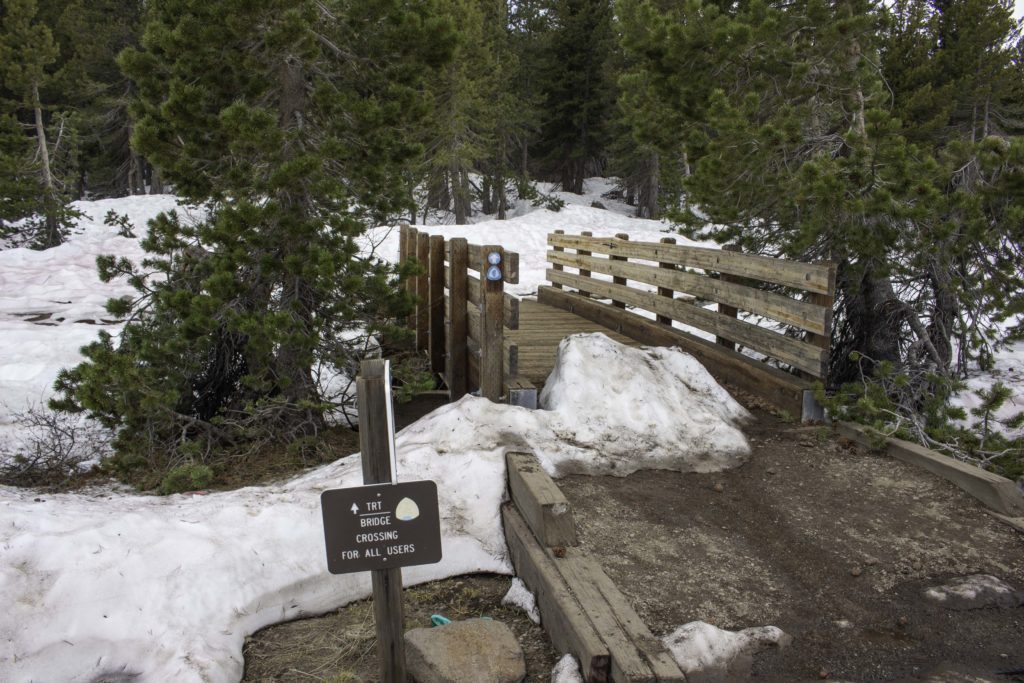

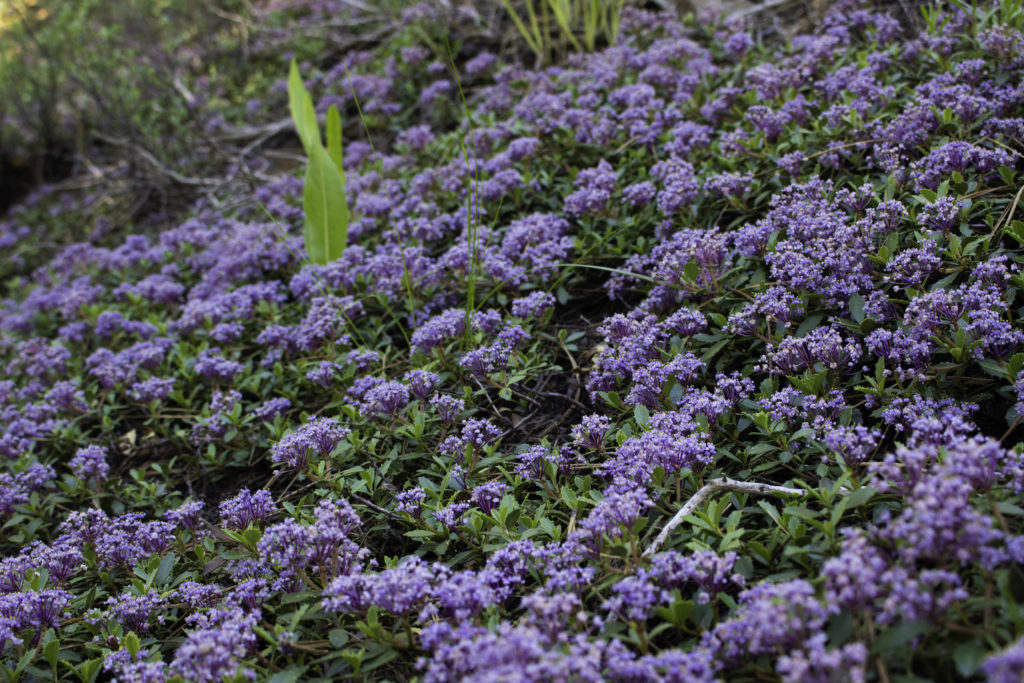








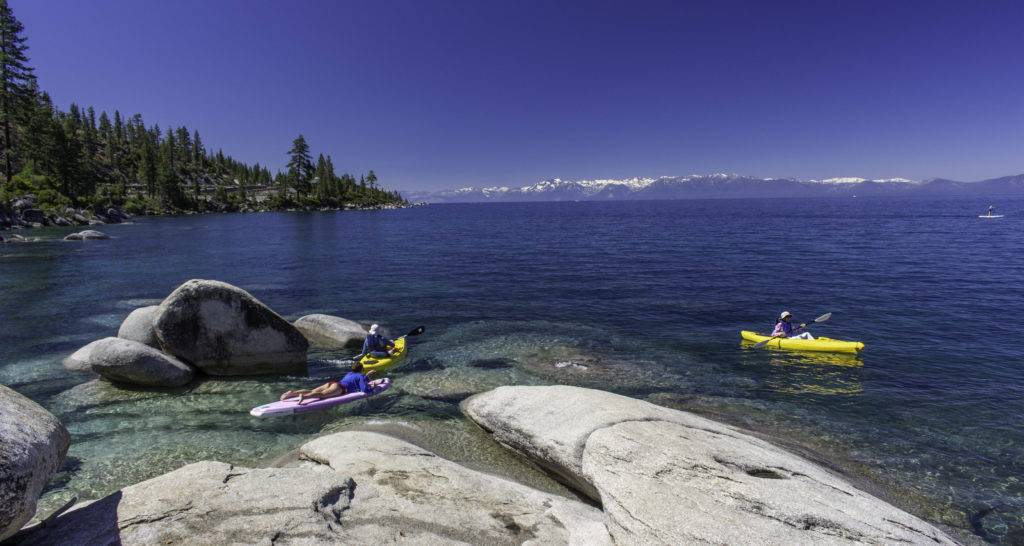


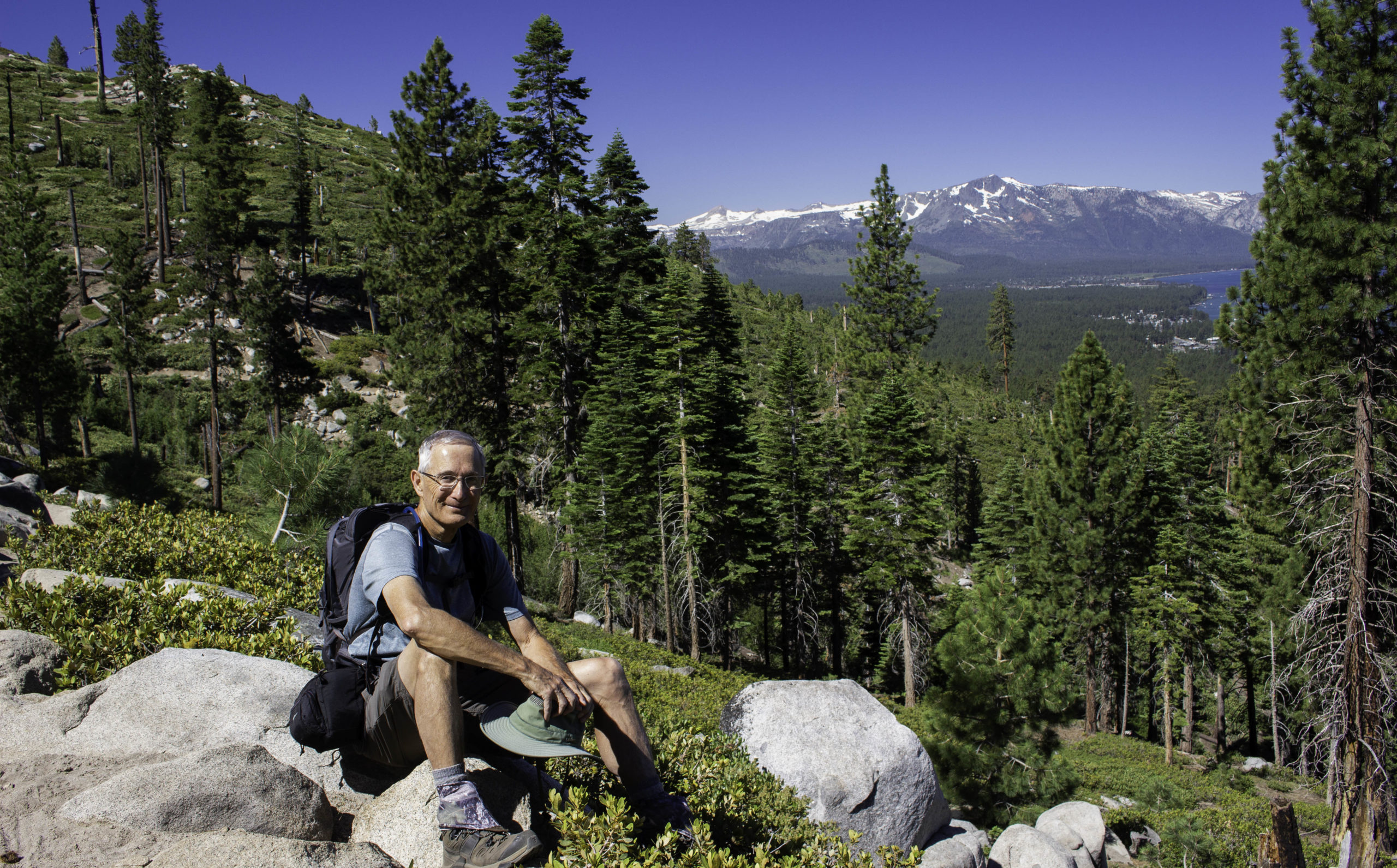
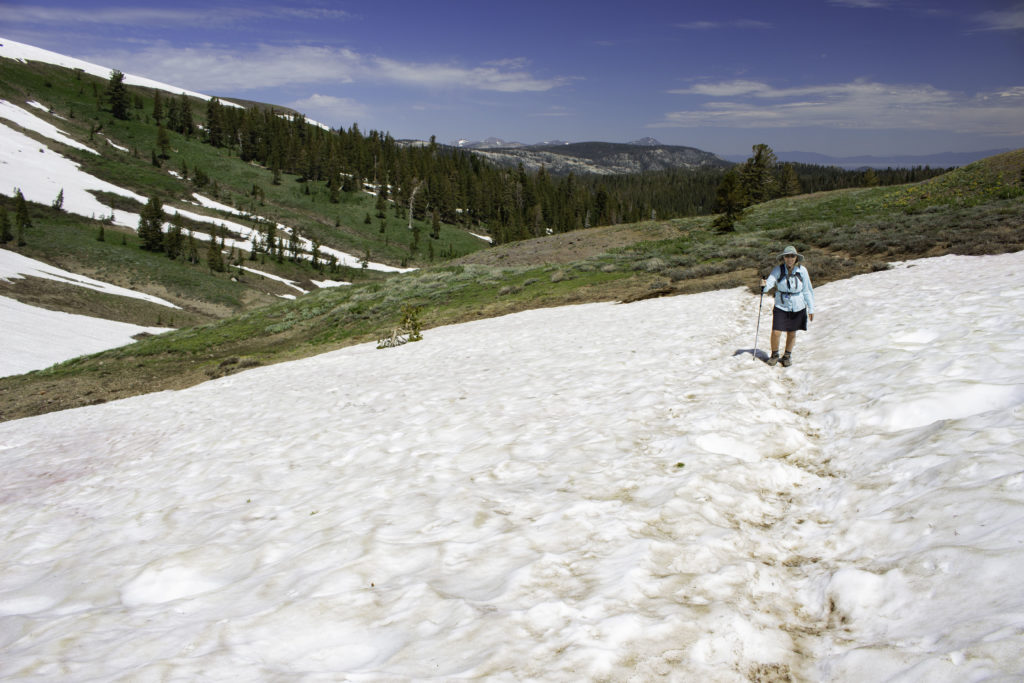





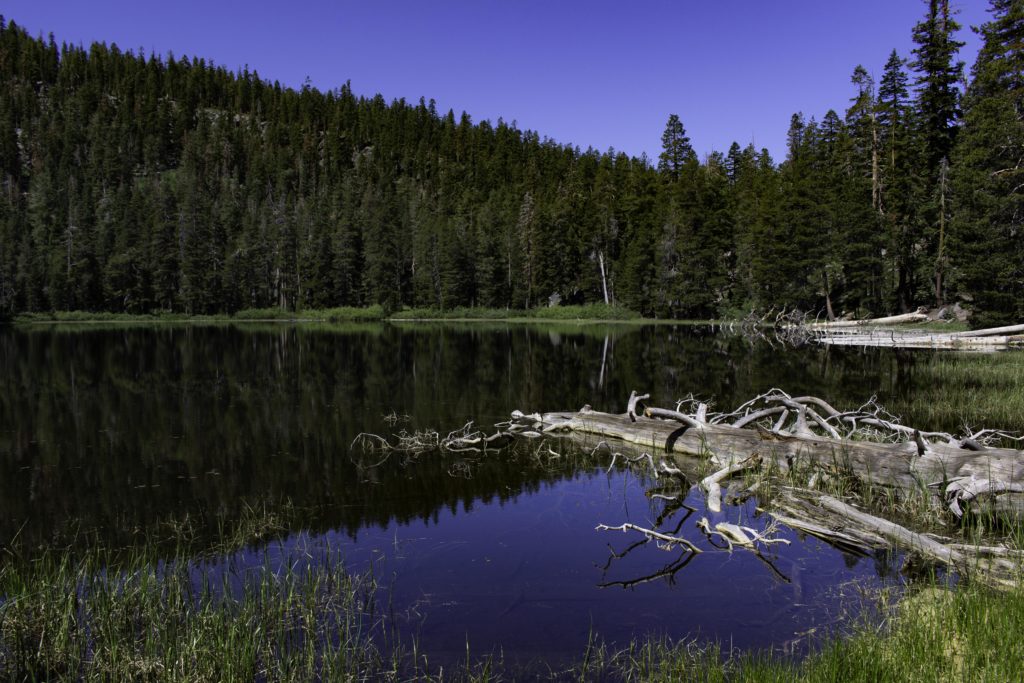



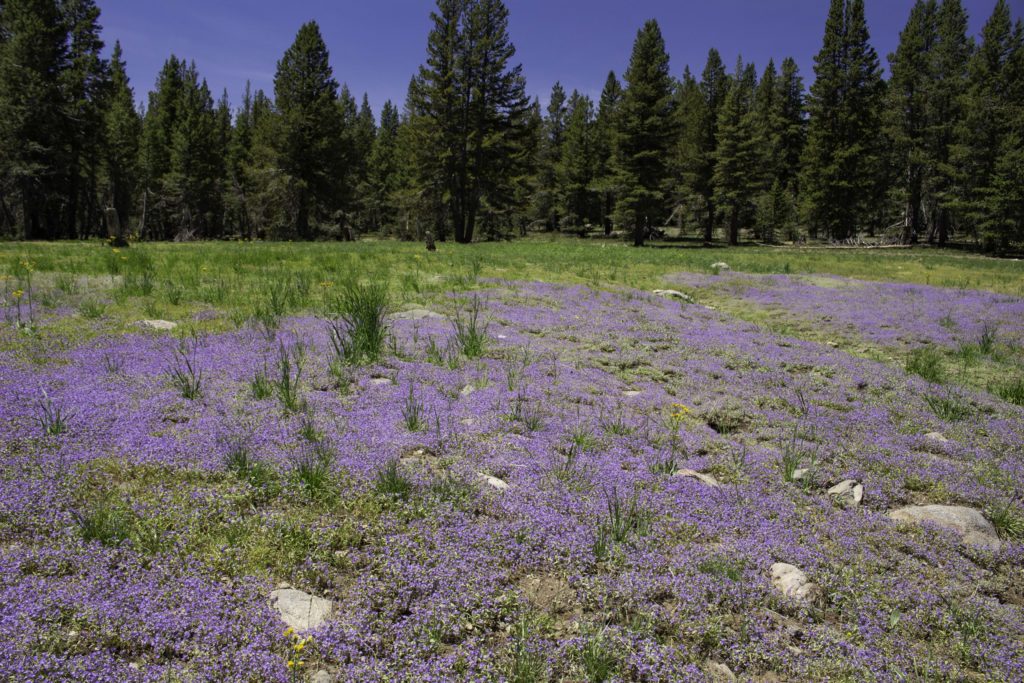
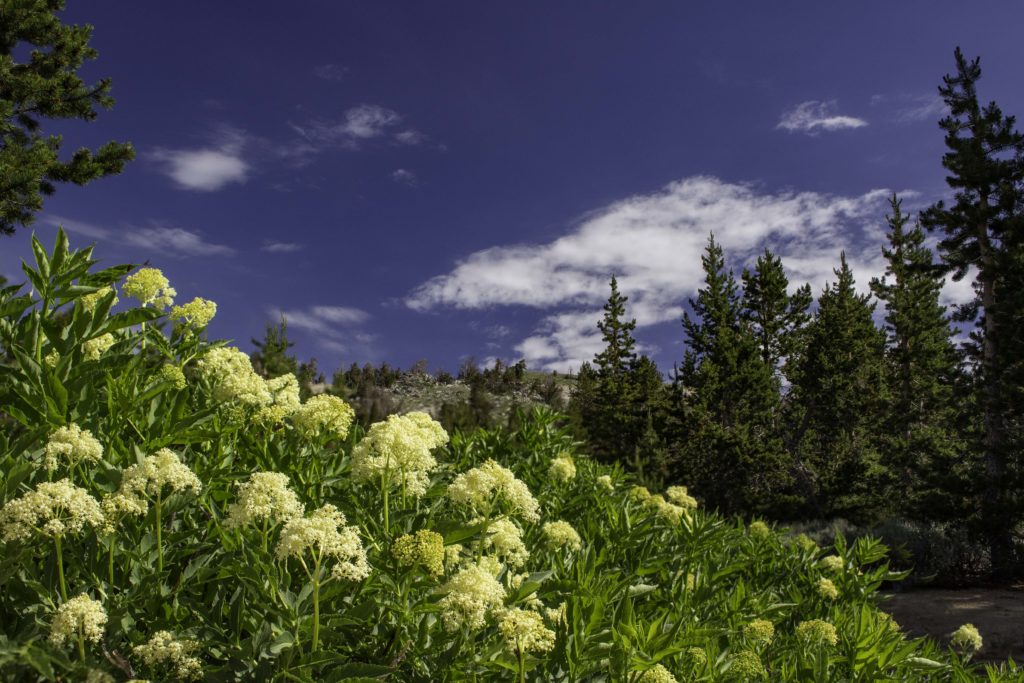
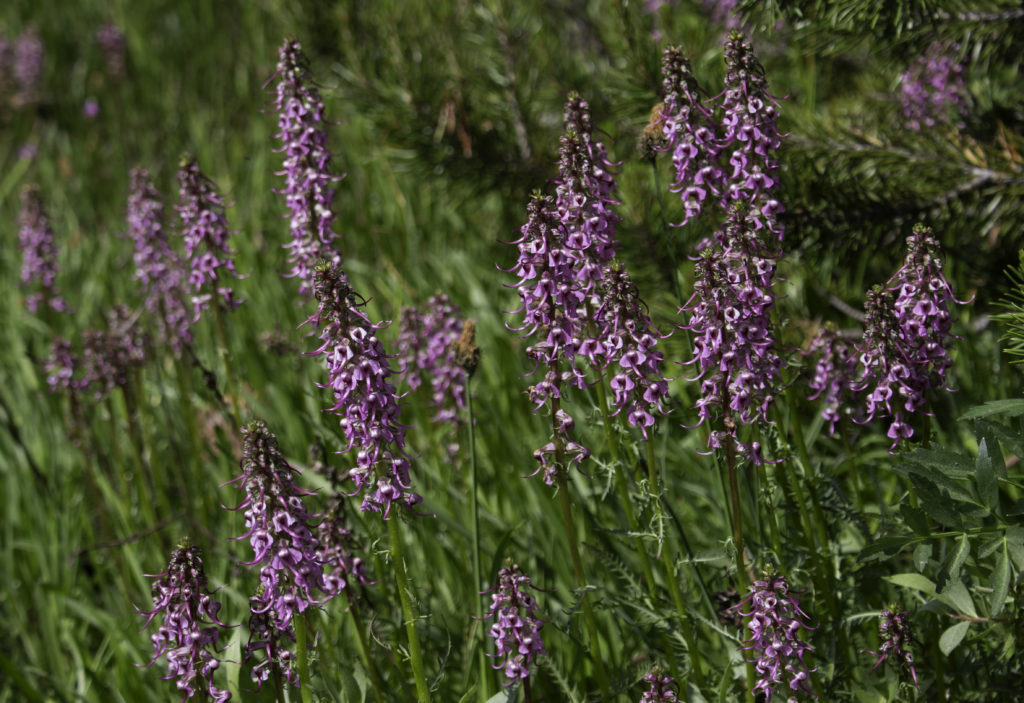


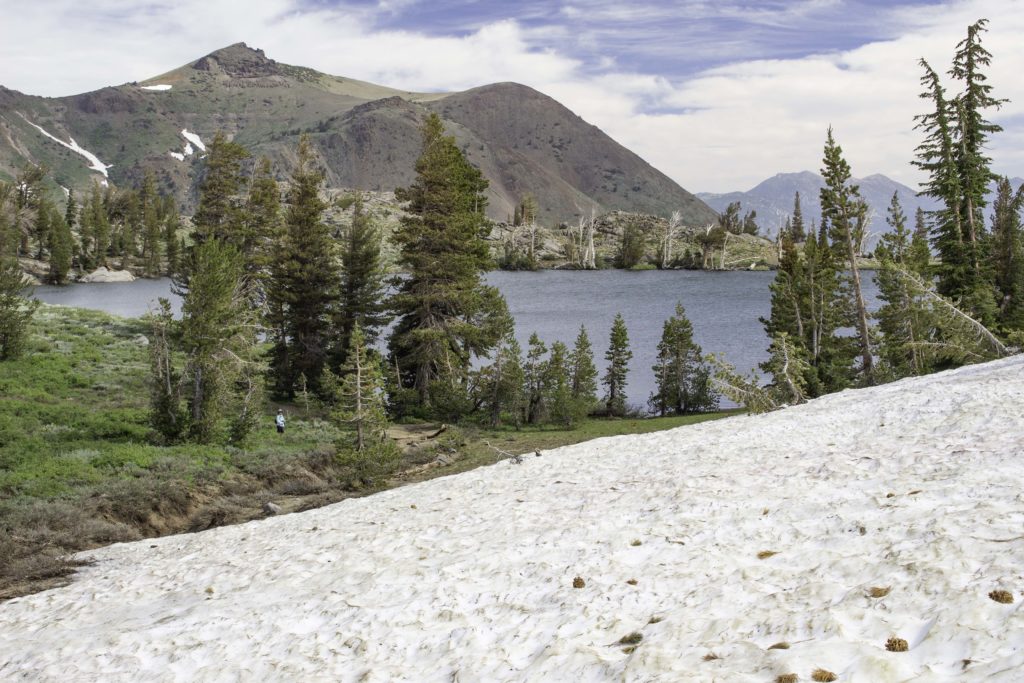

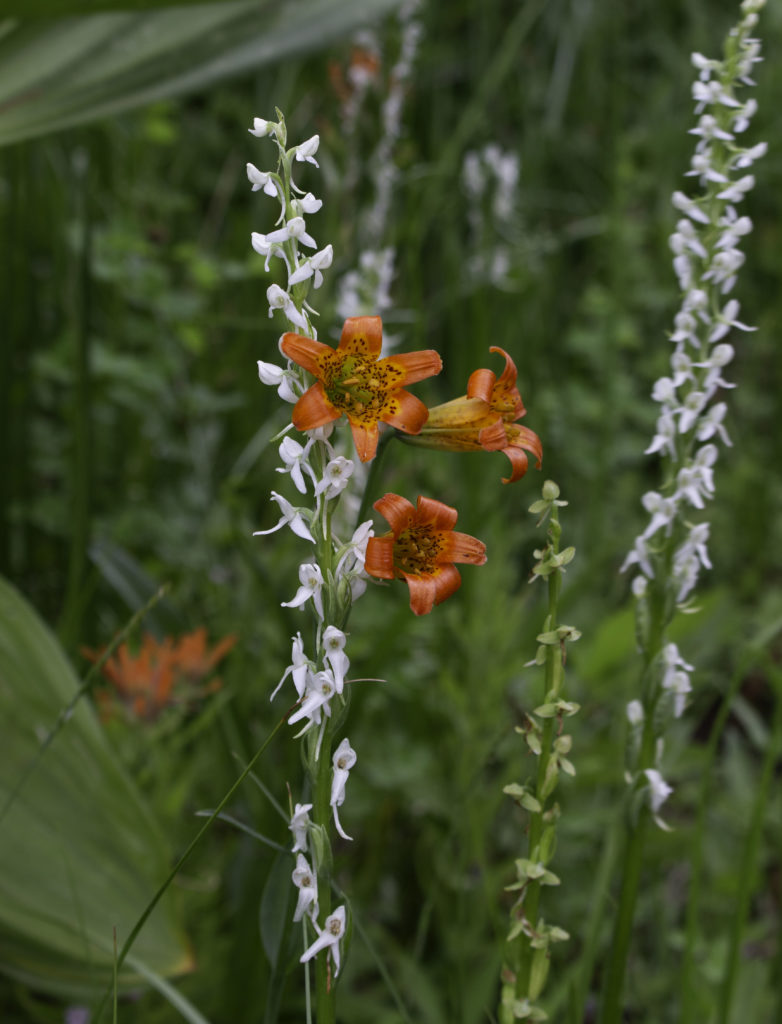

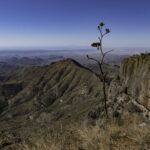
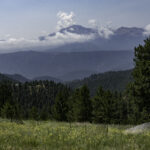
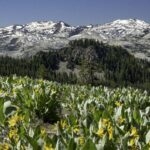
Very nice pics. The pics of the PCT segments bring back very nice memories. It was very dry when my daughter and I passed through there in 2012. Thanks for posting.
I still look at your pics over and over! Miss my favorite people! Feel as though getting to visit! Hope ya’ll are doing good! ♥️